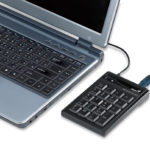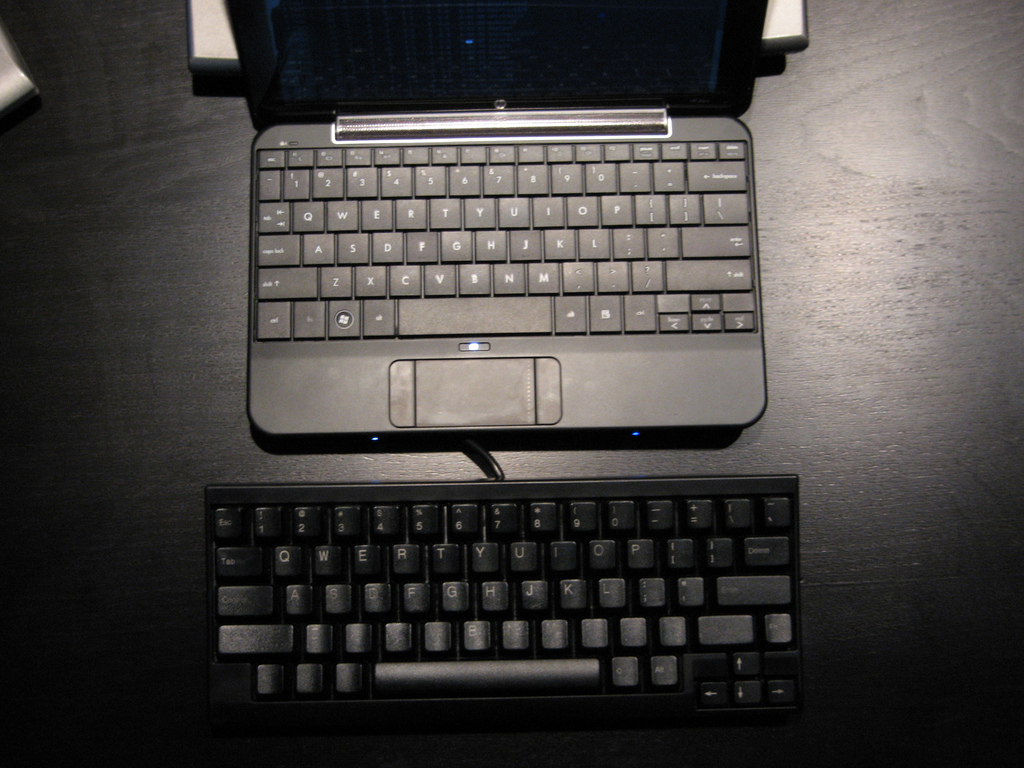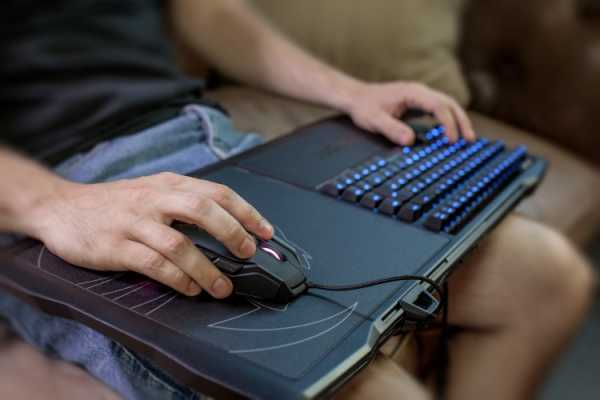Keyboard Monument
 Sometimes, using this or that device every day, people cannot even imagine its history. In this article, we will consider the time periods of the “life” of the keyboard, as well as the main locations of the monuments installed for the said equipment.
Sometimes, using this or that device every day, people cannot even imagine its history. In this article, we will consider the time periods of the “life” of the keyboard, as well as the main locations of the monuments installed for the said equipment.
The content of the article
The history of the keyboard
First you need to understand the definition of the word. First of all, the keyboard is a device that enters information into an electronic machine. Moreover, each model of the named unit is unified. Consequently, all products are equipped with a specific key order. As for the immediate beginning of the history of creation, this is a time period associated with 1873.
It was the first invention that was called “QWERTY”. The named electric printing machine was produced by Christopher Scholes. It was impossible to work on it quickly, otherwise it would jam. Consequently, users were provided with minimal options. Below are several main periods:
- At the beginning of the 19th century, manufacturers began to focus on improving the design, namely the transition from the original structure to a computer one. Thus, an updated model was released, named after Baudot, its manufacturer. The performance was based on encoding bits in the amount of five pieces.
REFERENCE! We can say that the invention became a replacement for the telegraph, since it also used a code of two bits (dots and dashes). So from now on, humanity could print text that would immediately become clear on paper. It is also worth noting that all interactions performed were synchronized, that is, as soon as the sound signal was played, the user lowered the button all the way.
- The next stage is associated with 1920, when the synchronous type of communication was especially popular in the field of finance and politics. Further, the structures were able to receive data in electronic form. And the text was printed only when it was necessary in order to save paper.
- In 1943, a representative of Eniac appeared. However, the area of application was in military circles.
- 1948 - creation of equipment directly for mass use (“Univac” and “Binac”).
ATTENTION! It was in 1960 that the electric typewriter keyboard was invented.
- Since the 1980s were the peak of personal computer production, it was necessary to manufacture a unit that would provide many functions. Hence, that's when the alt, ctrl and enter buttons were released. Thus, from this period the peak of modernization began.
- Speaking about the appearance of the usual type of product, it makes sense to mention 1987. Wireless models were soon produced.
Where can I see it?
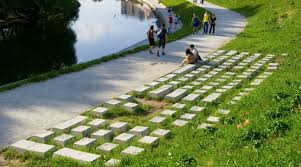 Naturally, today it is difficult to imagine life without using a keyboard. The description of its appearance is the same as on the real instrument. True, her appearance is impressive. And as you know, various monuments are often erected to those inventions that have contributed to humanity.Accordingly, below we will consider the most common and popular options.
Naturally, today it is difficult to imagine life without using a keyboard. The description of its appearance is the same as on the real instrument. True, her appearance is impressive. And as you know, various monuments are often erected to those inventions that have contributed to humanity.Accordingly, below we will consider the most common and popular options.
First of all, it is worth mentioning the monument located in Russia in the city of Yekaterinburg. Namely, not far from the Iset River. The opening itself took place on October 5, 2005. Externally, it is a copy of the keyboard made of concrete material. All 104 keys are located in the QWERTY layout, the weight of each of which varies from 100 to 500 kilograms. It's easy to guess that the most important button is the space bar. If we take into account the total area of the described project, the proportion will be 16 by 4 meters (scale 30:1).
The surface of the monument is quite flat and even, since all the products are built into the ground at a depth of 15 centimeters. There is a brick house next to the named structure, so local people say that this is the system block. Thus, due to the frequent visits to the attraction by visiting people, beliefs appeared over time. If a person wants to start his life anew (“from scratch”), then you can jump on the “alt” or “delete” key. Of course, in modern times the monument is protected, however, until 2011 several components were even stolen (F1, F2, F3, Y).
REFERENCE! Because of the incident described, the head of the Perm Museum was interested in moving the structure under the pretext that no one cared about it in Yekaterinburg.
Fortunately, a local initiative group kept the landmark in its own city. In addition, the project was restored and became located in a protected area. And later cultural events began to be held directly next to the monument. This increased its popularity.
History of the appearance of the monument
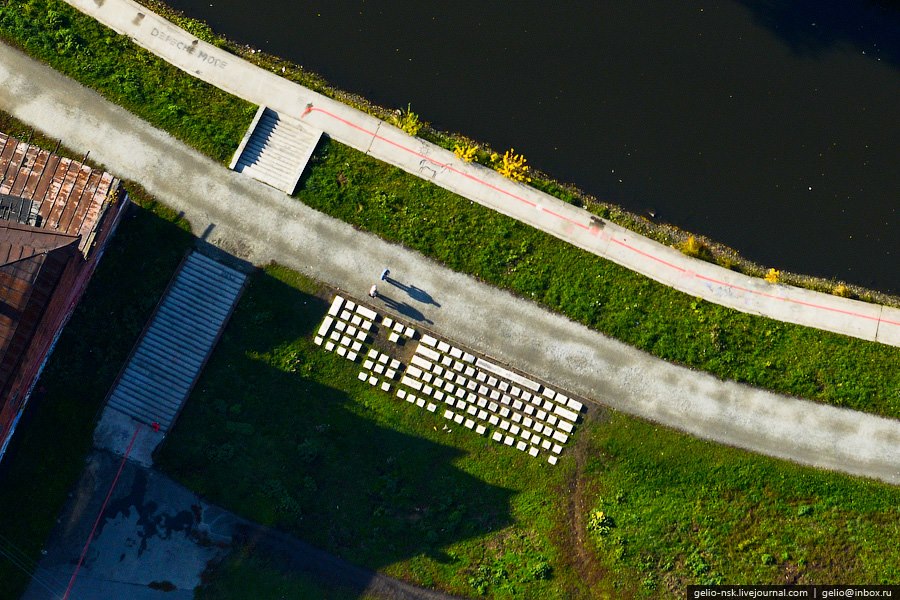 As mentioned above, the year of origin is 2005. As for the author, this is an artist from the Urals, Anatoly Vyatkin. The design was released for a special event festival called “Long Stories of Yekaterinburg.” Also, do not forget about the support provided for the implementation of the project. It was a company called Atomstroykompleks. And the curator turned out to be the ArtPolitika agency.
As mentioned above, the year of origin is 2005. As for the author, this is an artist from the Urals, Anatoly Vyatkin. The design was released for a special event festival called “Long Stories of Yekaterinburg.” Also, do not forget about the support provided for the implementation of the project. It was a company called Atomstroykompleks. And the curator turned out to be the ArtPolitika agency.
Thus, with the help of outside help, all parts of the system were made manually, due to the human factor. And the production has already been reproduced thanks to a certain technique. As for the time spent, it’s a month for independent work and about a week directly for installation.
ATTENTION! Perhaps one of the first visitors was not only the Swiss scientist Niklaus Wirth, but also Pascal himself, the author of the language. It is important to note that the visit took place shortly before the work was completely completed.
That is, they deliberately arrived at the specified time in order to observe the construction process. If we talk about the style in which the object is made, it is recommended to classify it as land art. The direction itself arose in the second half of the twentieth century. As the name suggests, it suggests a relationship with the natural landscape. Thus, not only did the structure itself fit neatly into the embankment street of the city, but it also directly complemented its surrounding environment. An example is the similarity of a nearby river with the “I-network”. Today, a keyboard invented on such a scale is truly very popular: children love to jump from one key to another, and adults make wishes on it.
This is interesting!
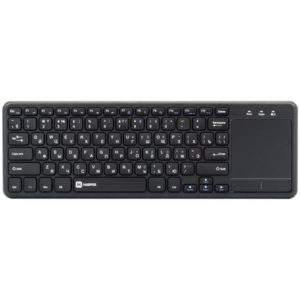 In addition, we can highlight some points related to both the appearance and the device itself:
In addition, we can highlight some points related to both the appearance and the device itself:
- Initially, the purpose of the keyboard was not the speed of the text printing process, but the actual organization of the document.
- Since previously all works were created rather slowly due to the instability of the “flight of the writer’s thoughts,” all the keys were located in the order in which the alphabet looked.
- After Evgeny Zorin (a man who did a lot for the development of the IT sector) passed away, a special sign was created with a QR code on it. It is located on the “End” button. And it is needed so that every visitor can find out basic information directly about Zorin.
- In 2011, the initiative group turned to the city administration to include the monument in the register for special values of modern culture. And it was from this very moment that the activation of various cleanup days and mass events began. On these days, most citizens participated in cleaning and painting the structure. In addition, additional competitions and championships began to be held.
- This monument has survived a lot of abuse from strangers. The list included more than just stolen parts. It also makes sense to mention the apple image on the “windows” key.
- Near the sculpture you can see a monument to the modem. From now on, residents only fantasize about creating similar structures that imitate the image of both a monitor and a computer mouse.
- The project itself was included in the list of one of the seven wonders of Russia.
- It was from the keyboard that the drawing of the “red line” began in 2011.



